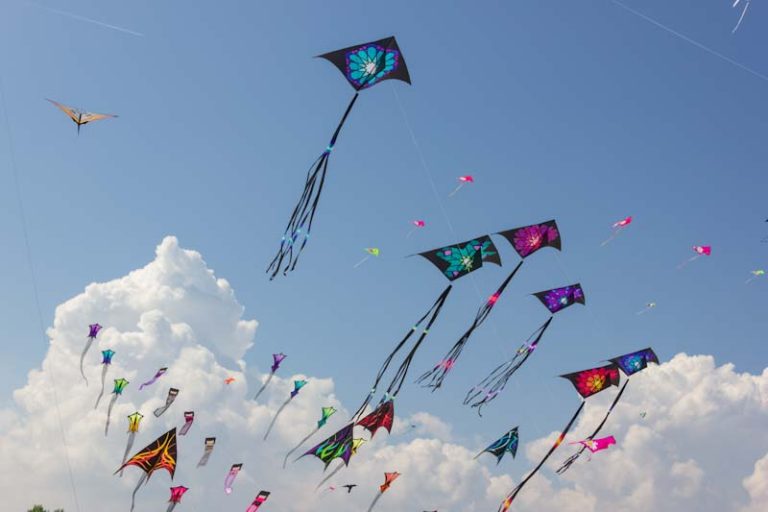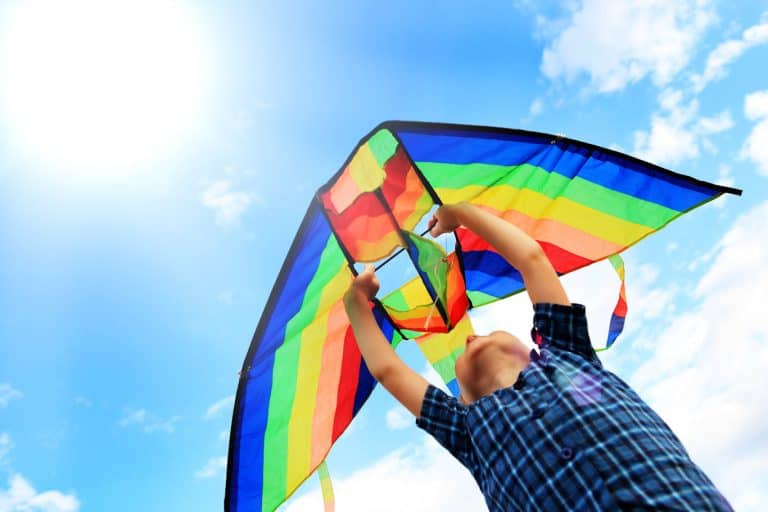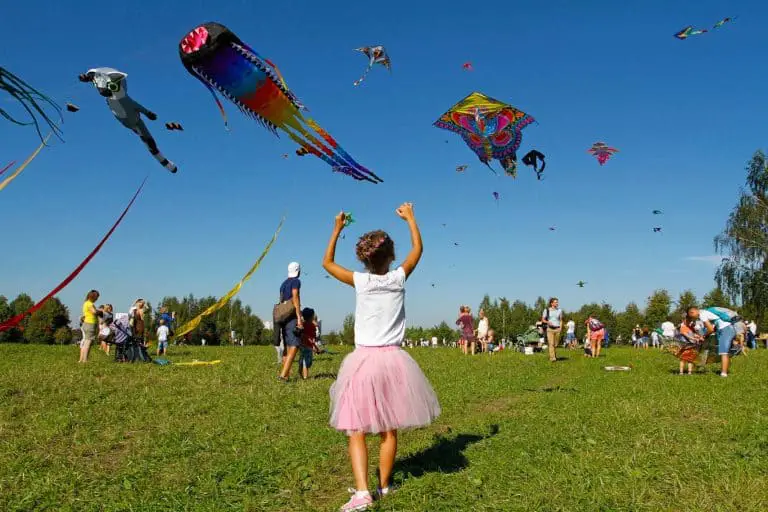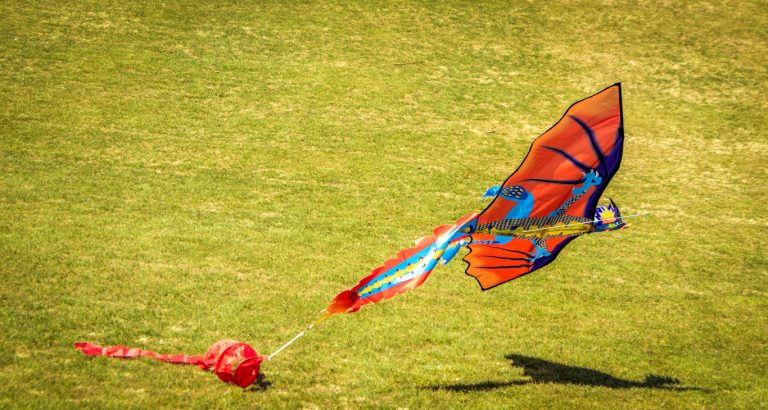Can You Fly A Kite In The Winter? (We Find Out)
Kite flying is most associated with spring or autumn, especially since these seasons are pretty warm, perfect for outdoor activities. Since the weather is not too hot and is appropriately windy, specifically for spring, many kites tend to fly around during this time. However, can you fly a kite in the winter?
Kite flying is an activity that one can do throughout the year. For most kites, even the slightest blow of wind can be sufficient. Whether spring, summer, autumn (fall), or winter, kite flying is always viable.
The science of kite flying is exceptionally intriguing (albeit complex). By the end of this article, you should be able to identify the best months to fly a kite, the tradition of winter flying, and the basic principles of kite flying safety during the winter.
Kite Flying And Its Different Forms Across Seasons
To many, kite flying is a straightforward activity. Take a kite, release it with the breeze and see it fly. However, kite flying can vary depending on the type of kite, the culture around such activity, and especially the seasons and weather.
For example, there are night kite flying activities and festivals. At the same time, there are also winter kite flying programs where communities come out every winter and enjoy the activity together. An example of such is the Lake Harriet Winter Kite Festival. (source)
Kite Flying Activities You Can Do Throughout The Seasons
- Parafoil kite surfing (summer)
- Snowkiting (winter)
- Traditional kite flying (autumn/spring)
- Kite fighting (spring/summer)

What Season Is The Best Season To Fly Kites?
Kite flying is always possible, and certain types of kite flying are more suited for certain kiting activities. For example, it is not suitable to fly kites for parafoil surfing in the winter, as the waters are much colder and can reach dangerous temperatures. Moreover, snowkiting is impossible in the summer because there isn’t snow in most areas during this time.
That is why it is essential to know what time of the year, or season to be general, is best for a specific kite flying activity. While some of these tips and general advice may be obvious, there may be some nuanced information that may help you along your kiting journey.
The Kite Flying Activities We Will Be Talking About:
- Conventional kite flying
- Snowkiting / Parafoil surfing
- Night kite flying
Conventional Kite Flying: Spring and Autumn
Conventional kite flying is most commonly associated when one talks about kite flying. It is typically done with the agent flying a kite (or a pilot in more official terms) and setting it free to sway along with the wind. This type of kite flying has originated in China and has continued until today. (source)
Conventional kite flying is very versatile, and one can do it in most weather conditions and climates. And while you may want to do the activity during mild seasons such as in spring and fall, no one can stop you if you’re going to fly a kite in the winter. All you need to do is a bit of air, and you’re ready to soar.
However, most kite enthusiasts agree that spring and autumn are the best seasons to fly a kite. However, which is the absolute best is up for debate.
For example, some proponents claim that spring is the best because it has the most prevalent winds. However, spring also houses the nastiest thunderstorms, and they are not the best conditions for kite flying, as these thunderstorms can endanger your life. In addition to that, some proponents also claim that while autumn may not have the strongest winds, they sure are very consistent! (source)
Conventional Kite Flying: In The Winter
Winter kite flying is not impossible, but it can get dangerous. One must always be vigilant while flying their kites during the frigid cold. It would be best to look out for many things when flying a kite out in the winter.
Since the weather is fierce during this season, make sure to bring enough layers of clothing for kite flying outside. Not only are you confronting the cold, but you are also facing the wind simultaneously.
While kiting in the snow is better than kiting in the rain, it would be best to stay indoors if the weather is not too good. However, flying a kite in the winter will be more enjoyable when the sun is out and is shining.
The Best Months To Fly A Kite At Night
Night kite flying is a whole league compared to conventional kite flying, not because it is better, but because it is different.
One thing you will need to take note of is that air blows differently during the night. This difference is made possible because of the concepts of air temperature and how hot and cold dynamics make breezes happen. And while you may have the sun supply constant heat in the mornings, the story is much different at night.
Air relies very much on other heat sources, excluding the sun, for breezes to happen at night. In the evenings, the temperature of the ground plays a vital role in creating a breeze to fly your kites.
This reliance on ground temperature makes it so that it is excruciatingly hard or near impossible to conduct night kite flying during the winter. For night kite flying to be a possibility, one must do it in hot seasons, preferably the summer. To know more about night kite flying, please read our article about flying kites at night.
Extreme Sports And Kite Flying: Snowkiting And Parafoil Surfing
Parafoil kiting is an exciting kite often used in extreme sports activities, such as surfing and snowkiting. Both can be very dangerous when not done with a professional.
Parafoil Surfing
Parafoil surfing is an activity done predominantly in the summer for obvious reasons. Not only is the summer great for outdoor activities, but it also provides the heat that encourages people to go out on the beach and swim.
There are many reasons why most professionals recommend parafoil surfing ONLY in the summer. Spring often comes with thunderstorms which can pose a real risk when surfing. These thunderstorms can hit the sea and conduct huge voltages of electricity, possibly injuring you. (source)
Although it is possible to do parafoil surfing during the winter, it is also heavily discouraged due to (you guessed it) safety reasons. The waters during the winter could reach near-freezing temperatures that can cause hypothermia. (source)
Snowkiting
You will need to conduct your snowkiting mantra during the winter. Although some of the snow leaks through spring, most of the time, it melts, making snowkiting near impossible. So for snowkiting, you should fly your kite during the winter.
Summary
Conventional kite flying is done better during the spring or autumn, where the winds blow strong, and the weather is not too extreme for outdoor activities. However, flying kites in the summer is often a much better experience for stronger breezes for night kite flying.
Meanwhile, for parafoil surfing, summer is often the best bet. The heat in this context is often advantageous for health and safety reasons. Meanwhile, snowkiting is only (really) viable in the winter due to apparent reasons.
Frequently Asked Questions
When Should We Do Kite Fighting?
One can do kite fighting in any season as long as enough wind goes around! Unlike other kite flying activities, kite fighting is not weather-specific or dangerous.
Where Can I Fly My Kite Safely?
You can fly your kite safely in open fields where power lines are not present, as well as trees where your kites may end up stuck. Moreover, extreme weather should discourage you from flying your kites (i.e., thunderstorms, intense rain showers, blizzards, etc.)
What Kite Should I Buy?
For beginners, delta kites and diamond kites should be the first option. Not only are they cheap, but they are also elementary to fly and do not require a lot of maintenance.
Sources
- “Lake Harriet Winter Kite Festival,” Minneapolis Parks And Recreation Board, Last Accessed December 3, 2021. https://www.minneapolisparks.org/activities__events/events/lake_harriet_winter_kite_festival/
- Maxwell E., “Kite Aeronautics,” Britannica, July 27, 2018. https://www.britannica.com/topic/kite-aeronautics
- Thomas K., “Spring Is Kite-Flying Season!”, Metro Kids, April 1, 2011. https://www.metrokids.com/spring-is-kite-flying-season/
- George A., “To Surf in Winter,” Popular Mechanics, January 19, 2018. https://www.popularmechanics.com/adventure/outdoors/a14416144/winter-surfing/
- “Storms & Water Safety – How to Stay Pool Safe,” Sunsational Swim School, Last Accessed December 5, 2021. https://www.sunsationalswimschool.com/blog/2016/10/storms-and-water-safety






